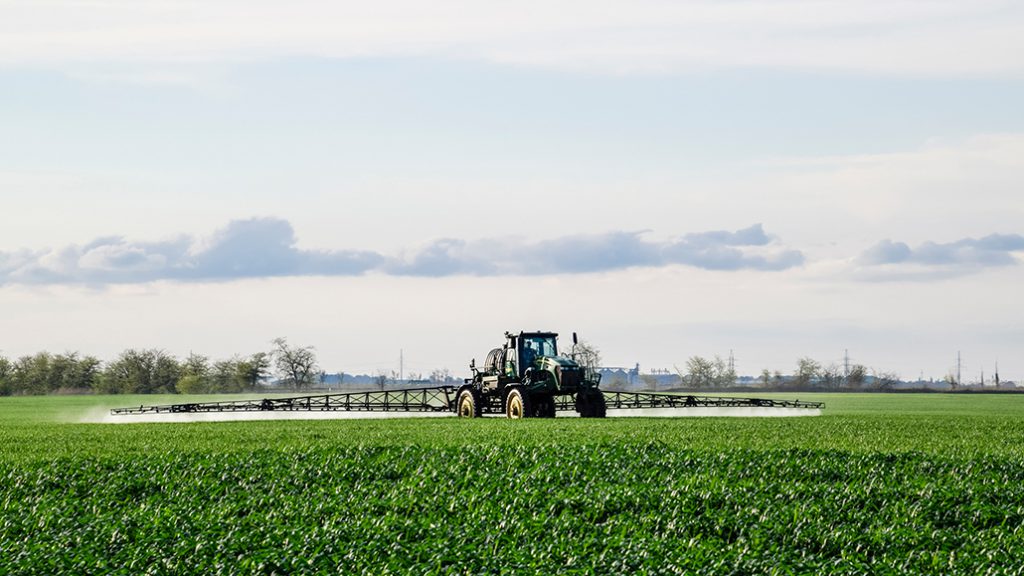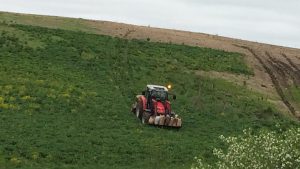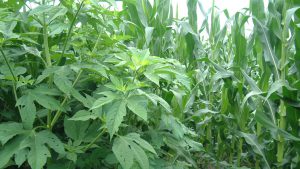Spraying best practices
TECHNOLOGY AND TRANSPARENCY

IN THE ERA of social media and keyboard warriors, it’s easy to feel like someone is always watching and ready to force their opinion on the world. The “tweet first, think later” mentality often adds to misinformation, and worse, it can leave science as a bystander — especially when it comes to modern farming techniques.
Farmers feed the world and they need to ensure they are growing high quality, high yielding crops. One of the most important elements of protecting high-quality crops is spraying. As farmers and custom applicators become more innovative and more knowledgeable about spraying techniques they have to strike a delicate balance, according to Jason Deveau, application technology specialist with the Ontario Ministry of Agriculture, Food and Rural Affairs (OMAFRA).
Deveau recently sat down for a Q&A session to discuss tips and tricks for smart spraying, understanding drift, and how important it is for farmers to share smart practices and be champions to others in the community.
V.B.: WHAT ARE SOME OF THE KEY AREAS TO SPRAYING? WHAT ARE THE TOP MUST-DOS?
J.D.: First and foremost, the laws of physics have never changed. We may present the facts in different ways to help people understand, or to make them more accessible, but when it comes to spray coverage and spay drift, there are three speaking points:
One — we want farmers to use the largest droplet size they can without compromising coverage. Two — we want the boom at the lowest practicable height to the field. And, three — we want farmers to adjust their spraying practices to match weather conditions, and know when spraying isn’t advisable.
V.B.: OK. LET’S START FROM THE TOP. WHY AND HOW DO FARMERS CHOOSE THE LARGEST DROPLET SIZE?
J.D.: Droplet size is an effective tool for combating physical drift. Larger droplets have more mass, which means they are more likely to fall rather than be carried away. But, for a given rate, the number of droplets a nozzle produces decreases as average droplet size increases. It’s the same amount of pie no matter how many slices.
Fewer droplets might compromise spray coverage, particularly when targeting small weeds or when using a contact pesticide in a dense canopy. The answer is to use more volume to bring the droplet count back up, but that means more refills for the sprayer operator, which is time consuming. A good operator is always considering the balance between drift potential, coverage, and efficiency. Even with sophisticated technologies, these considerations always lead to nozzle choice.
Traditionally, a grower would choose a nozzle based on the desired rate (e.g. gallons per minute) for a given pressure. As the sprayer changed speed, this would lead to over — or under — application. So, for convenience and consistency, most growers use rate controllers that monitor speed and auto-adjust the rate using pressure. But pressure also changes droplet size and spray pattern. Patterns can collapse at lower pressures (say <30 psi) and average droplet size decreases as pressures increase. You can see that droplet size wasn’t really on the radar. Pulse-width systems have changed this, but they are still few and far between.
And even if a grower chooses a nozzle with a coarse spray quality, they may be surprised to learn it still produces some fine droplets, too. Look at a bell curve. That’s how a nozzle is rated for droplet size — a lot of average sizes in the middle, and then a few smaller or larger sizes. A coarse nozzle does not make you bullet proof; there will still be some drift. That is why we always observe weather and time-of-day restrictions and adhere to the buffer zones that appear on the pesticide label.
V.B.: HOW DO LOW BOOMS IMPACT DRIFT AND WHY DO SOME FARMERS RESIST THIS ADVICE?
J.D.: Imagine holding out your arm and dropping a feather. It will move a ways downwind before landing. Now climb a ladder and do the same thing — it goes considerably further. It’s exactly the same for water droplets. To add insult to injury, releasing spray from a higher point also prolongs evaporation, making it even smaller and exacerbating the problem. And if that weren’t enough incentive to lower booms, the high booms create inconsistent spray coverage, undermining the whole reason for spraying in the first place.
The resistance to low booms comes from the desire to drive fast. North American booms sway and yaw, even with boom leveling systems. Higher speeds may get the job done faster, but it requires most farmers to raise the boom to prevent it hitting the ground. It may seem counter-intuitive, but there are several ways a farmer can slow down, drop the boom, and spray more acres in a day — it just requires them to look at their spray operation differently. A great deal of time is spent filling, idling, turning, and travelling between jobs. It’s been demonstrated that saving time on sprayer-related tasks has a big impact on efficiency — more than simply driving faster.
V.B.: HOW DO YOU KNOW WHEN THE WEATHER IS RIGHT FOR SPRAYING?
J.D.: Everyone knows the obvious cues. If your hat blows off, it’s probably not the time to spray. But, we’re learning that calm conditions may contribute to chemical trespass even more than wind. There’s no hard and fast rule, but three kilometres an hour to 10 kilometres an hour winds are a good range.
In calm weather, you may find yourself in a thermal inversion, which does not allow fine particles (or volatiles) to disperse and ground. Instead, they hang in a layer of undisturbed air, either moving downhill like water, or eventually moving in an unpredictable direction when the wind picks back up. It’s suspected that this phenomenon has played a significant role in the off target crop damage issues in the U.S. in 2016 and 2017.
In a very telling demonstration, an Ontario agrichemical rep showed that the smoke from a smoke bomb (representing pesticide vapour) travelled 1.7 kilometres during an inversion. In another demo, he showed it moving back and forth across the same field for hours after the application. Learning how to recognize a strong inversion, and knowing when there is too much or too little air will require a different way of thinking, but will greatly reduce the potential for chemical trespass.
(For more information on inversion winds and spray, visit: http://sprayers101.com/whydrift/).
V.B.: WHAT OTHER PRACTICES SHOULD FARMERS BE AWARE OF TO COUNTER DRIFT?
J.D.: There are a lot of other considerations, but let’s highlight two.
First – Downwind neighbours (residential and agricultural) can take actions based on your spraying schedule. If there’s a possibility of chemical trespass, it’s a courtesy to let them know your plans, or at least make spray records available and be prepared to answer questions. Quite often explaining what’s happening prevents them getting misinformation elsewhere. It may sometimes be a nuisance, but educating others is part of maintaining the public trust. Ontario farmers are experienced and certified and, frankly, the industry needs them to help educate people on all the good work being done.
Second – Night spraying. Please stop. Time is short and weather can force us to take opportunities where we find them, but calm, clear nights represent the highest potential for a strong thermal inversion. Knowing the weather conditions that affect product performance (for better or for worse), minding pollinator presence, knowing what’s downwind, and STILL following integrated pest management means there seem to be fewer hours left to spray. But, it’s really a matter of understanding which of those factors trumps the others in the decision to spray, or wait. It requires today’s farmer to play an active role when it comes to spraying.
V.B.: YOU MENTIONED PUBLIC TRUST. HOW WILL SPRAYING AND PUBLIC TRUST IMPACT FARMERS’ BUSINESSES?
J.D.: We talk about soil, stewardship, and environmental sustainability. But at the core of all those important considerations is the customer driving those agendas. We are getting close to the day (if we’re not there already) where the grocery store dictates farm practices.
Many broad acre farms are still self-regulating to a large degree. They do their best to maintain high standards for safety, transparency, and record-keeping. But, as specialty crop and livestock operations already know, we are moving towards tracing the history of a farm product from the customer all the way back to the seed. Farmers should adopt best practices proactively, before they become mandatory.
So, the level of attention on field crops is more acute than ever before. Many are not used to being under the public microscope. Customers are asking when, how, and what was it sprayed, and they want to know the weather and cleaning practices that were followed. We need to have those answers ready to show what we’ve always known — that farmers are self-aware, are stewards, and are responsible partners in public health and safety.
So spray like everybody’s watching… because they are.
Visit sprayers101.com to access more than 200 articles on spraying practices and innovations, videos, apps, and more. •

























